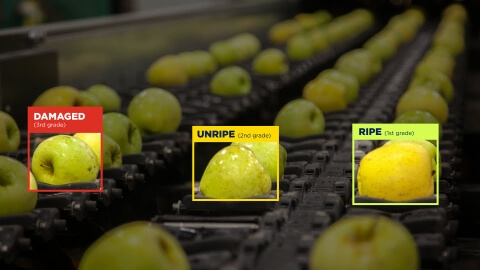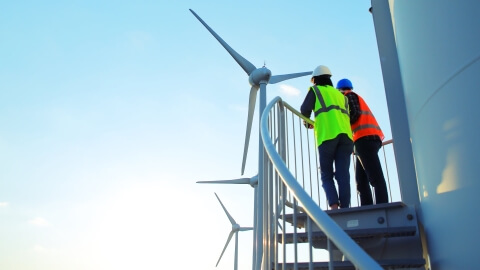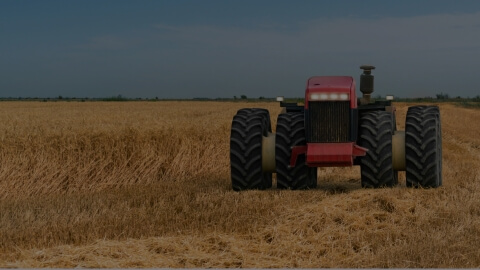Nearly 30% of the world’s energy is consumed by the agriculture sector. However, with rising energy costs and increasing demand for sustainability, farms are being pushed to rethink the way they consume power.
In this article, you will discover strategies for tracking and analyzing energy use, what challenges can hinder the integration of smart energy solutions, and real-world use cases that make farm operations more efficient.
![[D] for [A] Energy efficiency in agriculture_01_Lemberg Solutions.jpg [D] for [A] Energy efficiency in agriculture_01_Lemberg Solutions.jpg](/sites/default/files/styles/original_size_compressed/public/media/images/%5BD%5D%20for%20%5BA%5D%20Energy%20efficiency%20in%20agriculture_01_Lemberg%20Solutions.jpg?itok=OEUNEAir)
What are the common areas of high energy usage on a farm?
Depending on the type of your agricultural business, the areas of energy consumption that are inefficient can vary. However, there are several main areas that consistently consume the most energy across the many farms. These include:
- Lighting
- HVAC
- Machinery & equipment
Let’s examine how these areas affect energy efficiency in agriculture.
Lighting
Many farms heavily depend on lighting, especially those sectors where it is a must for the optimal growth of animals and plants. For example, proper lighting conditions positively impact the dairy livestock performance, improving lactation and growth rates of the animals. Additionally, with enhanced lighting levels, farm workers can experience improved operational efficiency and safety. Therefore, lighting remains a top energy expense, and optimizing its use can lead to improved safety, production, and cost efficiency.
HVAC
HVAC stands for heating, ventilation, and air conditioning. These systems are a crucial element of indoor farms, which create optimal conditions for both livestock and farmers. However, it also significantly adds to the total farm energy expenditure. For example, farms located in the colder regions have heating as one of the largest expenses, representing up to 85-90% of the total energy consumed. In contrast, air ventilation and cooling systems become critical during the summer season and in hotter regions. Hence, improving HVAC systems is a way to optimize energy use efficiency in agriculture, as upgrading ventilation systems can reduce energy spending by up to 20% without compromising farm productivity.
Machinery & equipment
Different agricultural businesses rely on a variety of machinery, such as tractors, irrigation pumps, or livestock feeding systems, which help workers carry out critical tasks more quickly and efficiently. However, this equipment is also responsible for a substantial share of the energy used. Some farms carry both older fuel-powered machinery and electric, battery-powered alternatives to improve productivity. However, fuel-powered equipment represents up to 75% of total power consumption. At the same time, while electric machinery offers a more energy-efficient solution, its benefits depend on proper calibration and smart usage. If not monitored, electric equipment can run longer than necessary or charge during high-tariff periods, undermining overall energy efficiency.
![[D] for [A] Energy efficiency in agriculturedesign CTA - blue - Lemberg Solutions.jpg [D] for [A] Energy efficiency in agriculturedesign CTA - blue - Lemberg Solutions.jpg](/sites/default/files/styles/original_size_compressed/public/media/images/%5BD%5D%20for%20%5BA%5D%20Energy%20efficiency%20in%20agriculturedesign%20CTA%20-%20Grey%20-%20Lemberg%20Solutions.jpg?itok=k6rddo8N)
How to optimize energy efficiency in agriculture in 3 steps
Upgrading outdated energy systems and machinery to new, more efficient alternatives will for sure lead to improvements. However, only to some extent. Why? Without understanding how, when, and where the energy is being used across the farm, the agricultural business cannot build a resilient and sustainable energy use strategy.
Until this challenge is tackled, any efforts to improve energy efficiency in agriculture sector will remain rather reactive and short-term than strategic and long-term.
To achieve truly meaningful improvements, agricultural businesses should follow these three crucial steps for smart energy management.
![[D] for [A] Energy efficiency in agriculture_02_Lemberg Solutions.jpg [D] for [A] Energy efficiency in agriculture_02_Lemberg Solutions.jpg](/sites/default/files/styles/original_size_compressed/public/media/images/%5BD%5D%20for%20%5BA%5D%20Energy%20efficiency%20in%20agriculture_02_Lemberg%20Solutions.jpg?itok=kb0yMvYF)
#1 Track your energy consumption
Most valuable energy data often remains unmonitored or lies hidden in fragmented records, which can be scattered across different, disconnected systems. Hence, the first step starts with tracking and collecting it. Installing IoT sensors, smart meters, and other energy monitoring tools across your energy devices helps to identify areas of high energy usage and spot any inefficiencies in the processes. Ideally, sensors should be installed on every piece of energy equipment to ensure energy efficiency in agriculture. However, you can prioritize the most critical assets, where better visibility into the energy expenditure can drive the biggest impact for your farm. Also, an important element of any tracking system is IoT connectivity. IoT gateways ensure that data collected from energy assets is transmitted to local or cloud-based storage for further analysis. With a solid database, farmers can make smart decisions about where to start the improvement first.
#2 Analyze energy usage patterns
Once the real-time monitoring process is launched, the next step is to interpret the data. This step requires integrating energy management software and data analytics tools to pinpoint peak usage periods or energy-intensive processes that impact your energy bills. For instance, the energy management software can showcase that some energy device systems are running longer than necessary due to poor calibration.
Also, with comprehensive data analytics tools in place, farmers can compare their energy usage patterns and identify any abnormal behavior in device performance. Energy management tools help discover valuable correlations that can lead to better resource allocation and smarter decision-making.
Smart energy management systems provide an opportunity for farmers to monitor, control, and optimize their energy footprint across all major assets from a single dashboard. Instead of a ton of energy bills and other documentation, all information is securely stored and processed in the cloud or any local storage and provided to the user in the form of dashboards, graphs and tables.
#3 Cut costs and improve energy efficiency on your farm
With a clear understanding of how and where energy is used, it is now time for action. This is the stage where it is time to reschedule equipment to run during off-peak hours, upgrade outdated machinery and electrical wiring, and fine-tune HVAC systems to reduce unnecessary spending. Also, by implementing smart energy management systems, farmers can control the operational efficiency of their energy-demanding assets, turning off the equipment or shifting to energy-saving mode when necessary, adjusting the heating based on the about weather forecasts or reducing ventilation system load when the optimal conditions are detected.
Even more, after knowing the most energy-intensive processes, farmers can look for making the process more automated and smarter by adopting precision farming technologies, which not only reduce the workload for workers and cut operational costs, but also increase productivity and yields.
![[D] for [A] Energy efficiency in agriculturedesign CTA - Grey - Lemberg Solutions.jpg [D] for [A] Energy efficiency in agriculturedesign CTA - Grey - Lemberg Solutions.jpg](/sites/default/files/styles/original_size_compressed/public/media/images/%5BD%5D%20for%20%5BA%5D%20Energy%20efficiency%20in%20agriculturedesign%20CTA%20-%20Grey%20-%20Lemberg%20Solutions_0.jpg?itok=lYDr-BJB)
Real-world tech solutions that drive energy efficiency in agriculture
Discover some practical solutions that have the power to cut operational costs and help farms to be more productive and energy independent.
Energy storage system
![[D] for [A] Energy efficiency in agriculture_image_03_Lemberg Solutions.jpg [D] for [A] Energy efficiency in agriculture_image_03_Lemberg Solutions.jpg](/sites/default/files/styles/original_size_compressed/public/media/images/%5BD%5D%20for%20%5BA%5D%20Energy%20efficiency%20in%20agriculture_image_03_Lemberg%20Solutions.jpg?itok=1SKaB1oA)
An energy storage system collects energy that is generated in excess during low-demand periods, storing it for later use. Typically, it is used to store the electricity generated by renewable sources, such as solar panels or wind turbines. This solution is an important backup option for farms, allowing them to become more energy independent and less dependent on the centralised power grid. Energy storage systems provide support during power outages, allowing farms to manage their energy expenditure more efficiently.
Lemberg Solutions supported the development of an energy storage system for Voltfang, a provider of energy equipment. We focused on IoT data logger device for this purpose. The device’s main functionality is to collect data from battery management systems within their energy storage system in real-time. As a result of the cooperation, the delivered product enhances Voltfang’s energy storage system, making it more stable and efficient.
Find more details about this project here
Energy monitoring platform
![[D] for [A] Energy efficiency in agriculture_05_Lemberg_Solutions.jpg [D] for [A] Energy efficiency in agriculture_05_Lemberg_Solutions.jpg](/sites/default/files/styles/original_size_compressed/public/media/images/%5BD%5D%20for%20%5BA%5D%20Energy%20efficiency%20in%20agriculture_05_Lemberg_Solutions.jpg?itok=Lz_gKKJ-)
Energy monitoring platforms enable farmers to have a real-time overview of their farm's energy consumption. They provide insights from connected devices such as irrigation pumps, solar panels, heating systems, and display them in a user-friendly manner for better understanding. Using such platforms, farmers can identify inefficiencies in their consumption patterns, set usage limits for their assets, and receive alerts when devices exceed these limits.
Lemberg Solutions helped to develop iOS and Android mobile apps for powerfox, a Germany-based company that provides an open platform service for users to monitor their energy usage. The core functionalities of the app are:
- tracking energy use and comparing the real-time indicators with the data from the previous day/week/month ;
- calculating upcoming payments;
- controlling maximum energy usage for connected assets.
Read more about the project here.
Agricultural weather systems
![[D] for [A] Energy efficiency in agriculture_04_Lemberg_Solutions.jpg [D] for [A] Energy efficiency in agriculture_04_Lemberg_Solutions.jpg](/sites/default/files/styles/original_size_compressed/public/media/images/%5BD%5D%20for%20%5BA%5D%20Energy%20efficiency%20in%20agriculture_04_Lemberg_Solutions.jpg?itok=PvnK1erl)
Weather monitoring stations help farmers make informed decisions to adjust the work of energy equipment on farms by providing insights into weather conditions. Such stations display indicators such as humidity, temperature, precipitation likelihood, and wind speed. Based on this information, farmers can plan specific actions to conserve their energy and water resources. For example, turn down the heating in the barns or greenhouses if the temperature outside hits a certain point, or postpone watering of the fields during the rainfall.
Smart irrigation technology
![[D] for [A] Energy efficiency in agriculture_06_Lemberg Solutions.jpg [D] for [A] Energy efficiency in agriculture_06_Lemberg Solutions.jpg](/sites/default/files/styles/original_size_compressed/public/media/images/%5BD%5D%20for%20%5BA%5D%20Energy%20efficiency%20in%20agriculture_06_Lemberg%20Solutions.jpg?itok=k0k3I0J0)
Smart irrigation systems use data about weather conditions, soil moisture, and plant state to adjust the watering process to be more efficient. Irrigation is carried out in this manner to prevent water waste and ensure that plants are neither overwatered nor underwatered. Such smart systems can also function through wireless communication, allowing farm workers to remotely control watering through a special device or even their mobile phone, and they do not require manual manipulation to open or close the water valve. Some irrigation systems have also proven to consume 30% less energy while saving water resources.
Challenges and how to overcome them
Following these three steps, however, requires farmers to understand the hidden pitfalls that can hinder their efforts to make their farm more energy-efficient. Here are the most pressing challenges and solutions for overcoming them.
Considerable amount of upfront investment
Implementing an energy-efficient strategy on the farm requires high upfront costs. The initial investment may include purchasing monitoring equipment, installing a specialized smart energy management system, and upgrading the overall farm's infrastructure. All these costs add up to a significant amount, which can have a major impact on a farm's budget, and not every agricultural business has the ability to allocate such a large budget for this purpose.
Recommendation:
Prioritize. You don't need to undertake a complete overhaul of all your energy-intensive systems. Start with improving the ones that are most crucial for you or that consume the most energy. Then slowly move to another assets or area that also need improvement. Additionally, for many small and mid-sized farms, there are numerous local grants or subsidies available specifically to make farming businesses more energy resilient.
Lack of technical knowledge and skills
Integrating sensors and smart energy management solutions into the existing farm systems, as well as establishing a correct data collection pipeline, requires specialized expertise, which unfortunately, most farm workers lack.
Recommendation:
Partner with a reliable vendor. With the expert team on your side, you can truly enhance your farm with the right solutions for your specific needs. From initial setup to ongoing support, your partner can bridge the knowledge and expertise gap, ensuring that everything works as intended and allowing you to manage your energy efficiently.
How can Lemberg Solutions support your agricultural business to be more energy-efficient?
Implementing smart sensors, establishing IoT connectivity, and integrating energy management solutions into existing systems and equipment requires not just specific tech expertise but also deep industry knowledge.
At Lemberg Solutions, we bring over 15 years of combined expertise in both energy management systems and agritech solutions. No matter whether you need to integrate your agricultural machinery and energy assets with IoT sensors, set up a reliable data collection pipeline, or develop custom AI or machine learning algorithms for analytics, we’re equipped to support your goals.

FAQ
What is meant by efficiency in agriculture?
Efficiency in agriculture usually means the smart and effective utilization of resources like water, energy, land and human labor for the production of agricultural products with minimal waste, reduced environmental impact, and enhanced productivity. To achieve a high level of efficiency, farms should seek to implement smart technologies and adopt sustainable strategies to drive their business forward better yields.
Is energy efficiency worth the investment for small farms?
Even with limited financial resources and capabilities, small farms should invest in solutions to enhance the energy efficiency of their businesses. Power optimization initiatives provide promising long-term benefits, including reduced energy costs, increased productivity, and enhanced energy resilience.
How to do an energy audit for a farm?
Energy audit always starts with collecting energy expenditure data. Therefore, you should inspect all your electricity bills. As your second step, examine your farm equipment – utilize special monitoring tools to observe how energy is used in your key processes, such as irrigation, heating, and lighting. Next, incorporate data analytics tools to get insights from the collected data. This way, you can spot any inefficiencies and areas for improvement. Finally, based on the results, outline a strategy with practical actions for enhancing your energy use patterns and implement them on your farm. For optimal results, consider hiring experts to conduct the energy audit on your behalf.



